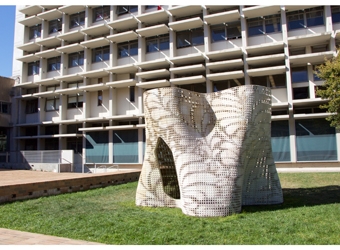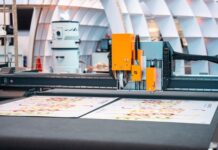3D Systems (3DS) has announced the unveiling of “Bloom,” a spectacular 3D-printed architectural-scale structure created at UC Berkeley using 3DS’s ColorJet printing technology. The work of Associate Professor of Architecture Ronald Rael and his graduate student team, the project was unveiled at the fifth annual Berkeley Circus.
“Bloom” is a freestanding, organically shaped room built from 840 mass-customized blocks, all of which were 3D printed on the 3DS ProJet x60 using a cement polymer developed by Rael. Measuring approximately 12 feet wide-by-12 feet deep-by-9 feet tall, this is the largest and most precise 3D-printed polymer structure to date.
Because the ProJet x60 series creates incredibly accurate, full-color parts, it allowed the team members to quickly transform their ideas into physical parts. Rael and his collaborators fabricated each unique numbered block using eleven ProJet x60s, and then assembled them by hand. Each block allows varying amounts of light to pass through the wall, creating a dynamic visual effect that interacts with floral patterns on the structure.
“Bloom” demonstrates how artists, architects, and engineers increasingly rely on 3D printing technology to design and produce complex structures with uncompromised speed, cost, accuracy, and creative freedom.
“While there are a handful of people currently experimenting with printing 3D architecture, only a few are looking at 3D printing with cement-based materials, and all are extruding wet cement through a nozzle to produce rough panels,” said Rael. “We are mixing polymers with cement and fibers to produce very strong, lightweight, high-resolution parts on readily available equipment.
“This project is the genesis of a realistic, marketable process with the potential to transform the way we think about building a structure.”
For more information about how 3D Systems is manufacturing the future now, visit www.3dsystem.com.











